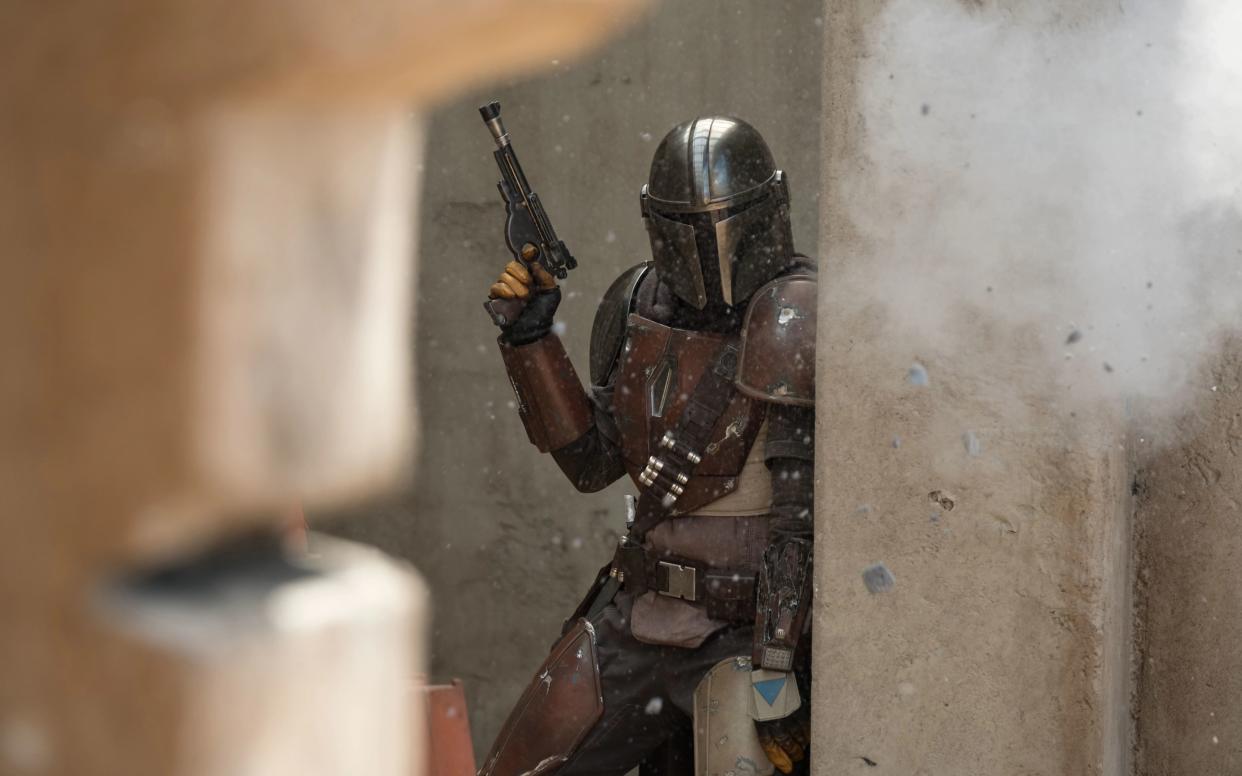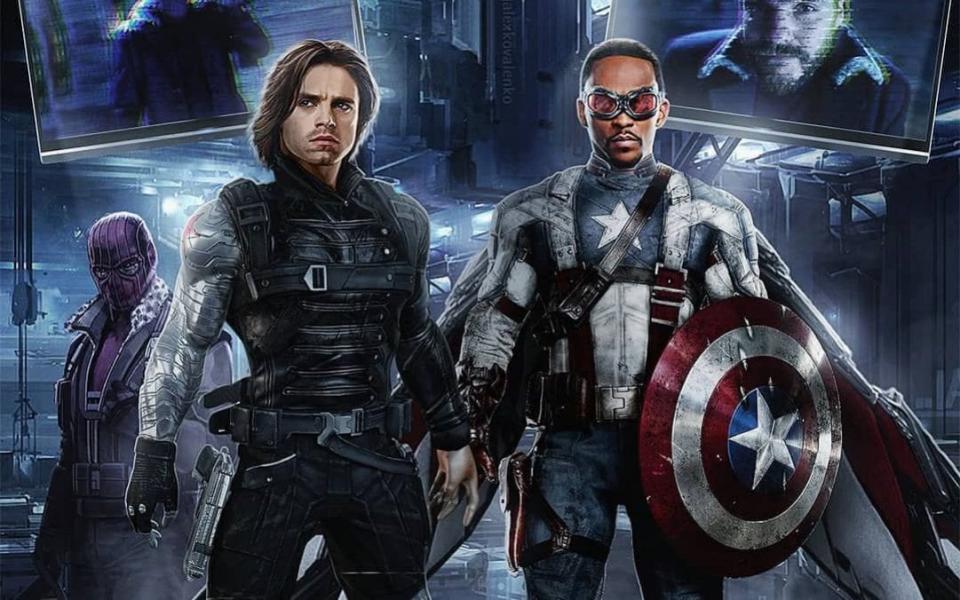Temperature checks, digital sets, and no sex: how will films and TV shows be made now?

The new Marvel series The Falcon and the Winder Soldier is about to set an unusual record in the annals of superhero media: it’ll be the first comic-book adaptation in history to have more masked people behind the camera than in front of it. In March this year, filming in Prague for the new Disney+ show was halted, and its cast and crew hastily recalled to the United States, due to the coronavirus outbreak.
But advice just published by the Czech Film Commission suggests cameras will be able to roll again sooner rather than later, providing the cast and crew abide by a new set of precautionary measures.
The good news is that stars including Anthony Mackie and Sebastian Stan won’t have to spend 14 days in quarantine on their return to Europe. Providing they test negative for the virus on their departure from the US, and again within 72 hours of their arrival, they’ll be free to work. The entire cast and crew will be tested every fortnight, sets and locations disinfected at the end of each shift, and extras must remain two metres away from the talent at all times.
The crew will be housed separately, and will be expected to “behave aseptically” out of hours – the Prague pub crawls will have to wait, in other words – and lunch breaks will be taken in shifts.
And here is the dramatic one: with the exception of performers who are actually in shot, everyone should be wearing PPE at all times: face masks, respirators, and rubber or latex gloves, regularly disinfected. This will naturally cost the production a great deal of two things: time and money.
But for Disney, the bill may be worth it. The Falcon and the Winter Soldier is one of a raft of heavily marketed coming attractions on the Disney+ streaming service, most of which have been thrown off course by the ongoing pandemic, but which the studio needs to hold onto its subscribers. Even the second series of The Mandalorian, which finished shooting just two weeks before lockdown, is being edited on Zoom – though its October release date is still holding fast.
As the various national infection-rate curves flatten, plunge and soar like the skyline of a theme park, it’s clear that the film industry in a post-Covid world is going to become something of a roadshow. For the duration of the pandemic, films can only be made in places where lockdown measures have been eased to the point at which the business of filming becomes logistically possible. That’s currently a very short list.

But Netflix, which until March had small-to-medium-scale shoots up and running all over the place, is now finding itself able to ease them back into production in a select range of locations.
In Iceland, where testing is commonplace, the streaming platform’s science-fiction series Katla is back in business after its cast and crew were all certified corona-free. Their set now runs a bit like a family leisure pool, with timed sessions and coloured wristbands used to keep the operation as skeletal as possible at all times.
In Sweden, where tests are harder to come by, the romantic comedy series Love & Anarchy will be able to press ahead later this month after its cast and crew all agreed to self-isolate for 14 days, then live together for the duration of the shoot. And in South Korea, with its mass testing and contact tracing, the only additional safety measure required on the second series of the romantic drama Love Alarm is a daily temperature check. Netflix has also recommenced filming in Japan, with Norway to follow in July.
As for the now-paused shoots in America and elsewhere in mainland Europe – including the UK, where a number of enormous productions including Jurassic World: Dominion and The Batman have ground to a halt – a late summer resumption of activities is the best anyone’s hoping for at present. And even then, of course, something resembling the rigorous Czech hygiene regime will have to be in place. Cast and crew will certainly say goodbye to lavish on-set food tables and hello to pre-packaged airline-style meals.
As for romantic scenes, films may have to follow the lead of Aussie soap Neighbours, which has resumed filming minus and storylines involving physical contact, from kisses to manly back-slaps. If a recently leaked document from the British Film Commission is anything to go by, sex scenes will be impossible: actors "should work back to back or shoulder to shoulder, rather than face to face”, it states.
Yet for certain titles – including some blockbusters – all this might be less of an all-consuming nightmare than it sounds. For more than two decades, Hollywood has been preparing for a world of socially distanced filmmaking. The term is “virtual production”, and it has almost nothing in common with what’s currently going on at Neighbours.
After blending digital effects with live-action footage in 1997’s Titanic, the visual effects supervisor Rob Legato devised the technology that would allow directors to effectively see – and therefore ‘shoot’ – virtual characters and objects in their cameras’ viewfinders, rather than having to wait for them to be added from scratch in post-production.
The technique was used and refined by Martin Scorsese in The Aviator and Hugo, and notably by James Cameron in his 2009 science-fiction epic Avatar, before being revolutionised in Jon Favreau’s recent remake of The Lion King, which was created almost entirely within a photorealistic virtual space. First, the voice cast deliver their lines in a black box rehearsal space.
Then animators craft the computer-generated characters’ performances and place them on a digital set, where they’re ‘filmed’ by a crew equipped with VR headsets. There is no part of this process that requires participants to be within two continents of one another, let alone metres.
Better still, it’s compatible with live action. Take – again – The Mandalorian, which was made using Industrial Light & Magic’s new StageCraft technology, with actors performing on a circular set 75 feet in diameter and surrounded by a 20-foot-tall curved LED screen.
This shows a ‘living backdrop’ which shifts in sync with the camera’s movements, creating the illusion of an expansive environment – a teeming spaceport, a sprawling desert, or anything else the graphic artists can dream up. Unlike green screen, the cast can actually see what their characters are looking at, and act accordingly, while on the technical side, the ambient lighting and reflections take care of themselves.
None of this technology, however, can answer a vital question: should these new productions reflect the conditions under which they will be made? Like any large-scale emergency, from earthquakes to Godzilla, it’s hard to imagine coronavirus featuring in a story that isn’t ultimately about it – and do we really want to watch fictional characters slogging through lockdown while we all do likewise?
Great films and series will eventually be made about these strange times. (Bad ones too, of course.) But honestly, right at this moment, have you any appetite to watch one? It’s encouraging to remember that just a year after the Spanish Flu abated in 1919, Hollywood was in business again – and 1921 was a notable blockbuster year which saw the release of Charlie Chaplin’s The Kid, a string of legendary Buster Keaton shorts including Hard Luck, The High Sign and The Goat, and Rex Ingram’s blockbusting war epic The Four Horsemen of the Apocalypse, which adjusted for inflation remains the highest-grossing silent film ever made.
But how many of these wildly popular, still-revered films were about the Spanish Flu pandemic? You guessed it.

